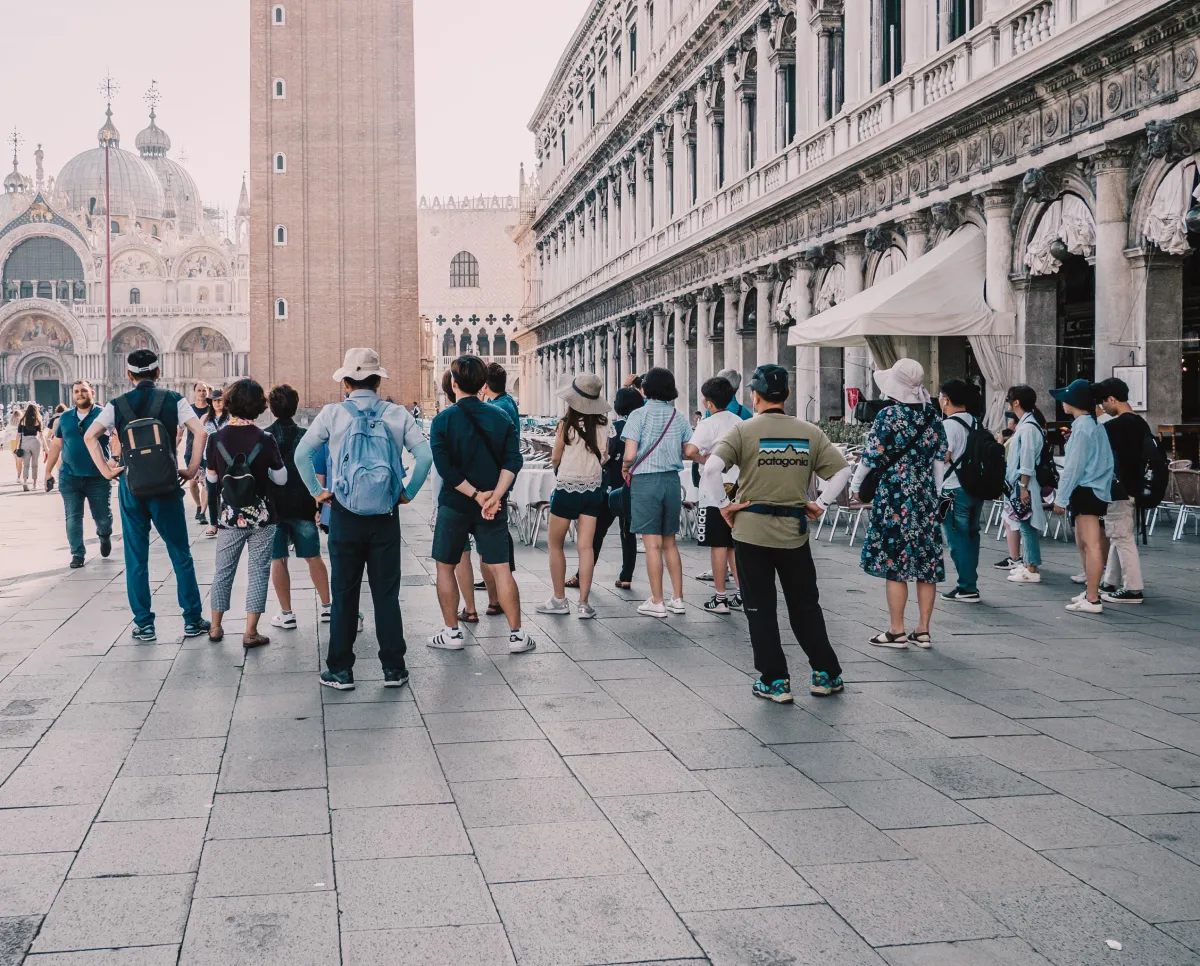Using fire to drive away Christmas goblins, cribs that include semi-naked figures or hiding brooms from evil witches: Christmas is celebrated in all corners of the globe but the festivities and Christmas customs differ greatly from country to country.
After going on a Christmas journey to the Netherlands, the US, Great Britain, France, India, Brazil, and Iceland in last year’s blog post entitled “International Christmas customs”, we want to introduce you to some more fascinating customs this year. Read about festive atmospheres and all sorts of curiosities.
1. In Denmark, Christmas goblins are also given a bowl of porridge
Particularly for children, the Christmas season can feel like an eternity. Along with traditional advent calendars, the Danes keep the tradition of a calendar candle. It is lit and burned down in daily intervals from December 1st to 24th.
From the end of November onwards, people also start to look forward to all sorts of Christmas celebrations organized by bowling clubs, workplaces, groups of friends or sports clubs. Traditional Christmas dishes at these events include herring with curry salad, fish fillet with remoulade, liver pate, red cabbage and caramelized potatoes.
And of course, no celebration would be complete without special Christmas beer. This is celebrated each year on J-Dag, the first Friday in November, by people dressed up as Christmas goblins along with artificial snow delivered to the bars – a celebration that is celebrated in the pub scene throughout the country.
On Christmas Eve, the Danes dance hand in hand around the Christmas tree, which is decorated with red and white braided Christmas hearts. They also serve a traditional almond rice pudding that is supposed to bring good fortune. Whoever finds the whole almond hidden inside receives a small gift. However, humans are not the only ones who look forward to this tasty dessert: the Danes love their Christmas goblins, which is why they leave a small bowl of porridge outside the goblin’s door – a wall decoration set up for the occasion. God jul!
2. At Christmas in Spain, Jesus lies beside a half-naked man
During the pre-Christmas period, the entire of Spain goes mad for cash. The reason is the national lottery. Every year on December 22, it pays out the largest jackpot of the year, “El Gordo” (“The big one”). In the hope of an early Christmas blessing, most of the population takes part and the whole country appears to come to a stop when the results are announced.
Although people traditionally dine together with their families on Christmas Eve and on Christmas Day, Spanish children have to wait slightly longer for their presents. These only arrive on January 6 courtesy of the Three Wise Men, who parade through the city as part of a caravan procession the previous day.
Instead of a Christmas tree, many Spanish people prefer to set up a crib in their living room. In Catalonia, the arrangement of the crib has observed a rather curious tradition for more than 200 years: in addition to Mary, Joseph and the baby Jesus, it features the “Caganer” – literally the ‘defecator’ – a figure with an exposed backside about to answer nature’s call.
Even the Catholic Church accepts the bizarre figure as a symbol of good fortune. We should point out that you can choose from a variety of public figures such as Donald Trump to play this role. Well then: ¡Feliz Navidad!
3. In Japan, people eat their Christmas dinner at KFC
With less than one percent of its population being Christian, Japan is not a typical country for celebrating Christmas. Nevertheless, Christmas is celebrated in Japan – just very differently. Religious themes play virtually no role.
In fact, the focus is on love: At Christmas, people spend a lot of time going on dates. Rather than celebrating with their families, young Japanese go on sentimental walks to admire the Christmas decorations and enjoy romantic candle-lit dinners.
Or even fast-food meals at Kentucky Fried Chicken. In fact, ever since running an advertising campaign in 1974, KFC has consistently recorded its highest sales figures on Christmas Eve. For many Japanese, fried Christmas chicken is an essential part of the Christmas festival. By contrast, presents are only exchanged in families with children. メリークリスマス, Merii Kurisumasu!
4. In Mexico, people pummel cardboard figures
In Mexico, a devoutly Catholic country, people commemorate the journey undertaken by Mary and Joseph for nine days leading up to Christmas. During these processions or posadas, children dressed in costumes go from door to door singing Christmas carols and asking for admission. Just like Mary and Joseph back in the day, they are turned away from the first houses and only find shelter later on.
The hosts of the posada organize a small party with games, music and dance. Children wearing a blindfold use a stick to hit the piñata, a cardboard figure filled with sweets, until it breaks open. This is a real treat for many children.
On Christmas Eve, the final posada evening, all families attend midnight mass and enjoy a traditional meal of Christmas turkey. These celebrations often continue until the early hours and frequently involve an artificial Christmas tree, ideally in pink or blue. ¡Feliz Navidad!
5. In Norway, witches steal the cleaning gear
Norwegians are convinced that the “nisse” or Santa Claus lives in Norway. Given the country’s seemingly endless forests covered in fine powdery snow, wild roving reindeer and candlelit wooden houses, it’s an easy story to believe. However, the precise location where he lives remains a secret.
Just like in Sweden, the darkest day of the year, December 13, is marked by a lantern procession. Children dressed in white as “Santa Lucias” and wearing a wreath of candles on their head parade through the towns singing typical “Santa Lucia” songs.
Meanwhile, things turn spooky on Christmas Eve: according to an old superstition, witches and ghosts emerge from their hiding places on Christmas night and play all sorts of mischievous tricks. To stop the witches borrowing people’s brooms or mops in order to fly through the air and cause chaos, these items are locked away as a precautionary measure at Christmas. This means that spilled mulled wine or cookie crumbs can only be cleaned up on Christmas Day. God jul!
6. In Greece, fire is used to drive off the Christmas goblins
In Greece, it is goblins – known as kallikantzaroi – rather than witches that emerge from the underworld. To ward them off, Christmas fires blaze for 12 nights throughout the country. On Christmas Eve, children carrying bells and drums parade through the streets and sing Kalanda, songs of praise that are supposed to bring good luck. In return, they receive small gifts of money or sweet pastries.
However, they have to wait until the festival of “Aghios Vasilis” on December 31 to receive their Christmas presents. On New Year’s Day, Greeks also eat “Vasilopita” or New Year’s Bread. Whoever finds the lucky charm hidden inside it, usually a coin, will not face financial worries in the coming year. Kala Christougenna!

The different Christmas customs celebrated around the world are as diverse as our languages. Which Christmas tradition did you like best? Perhaps you will incorporate one of these customs into your own celebration?
The international ACT Translations team wishes you a peaceful Christmas and lots of success in 2023! We will gladly help you understand important languages and cultures any time next year.







